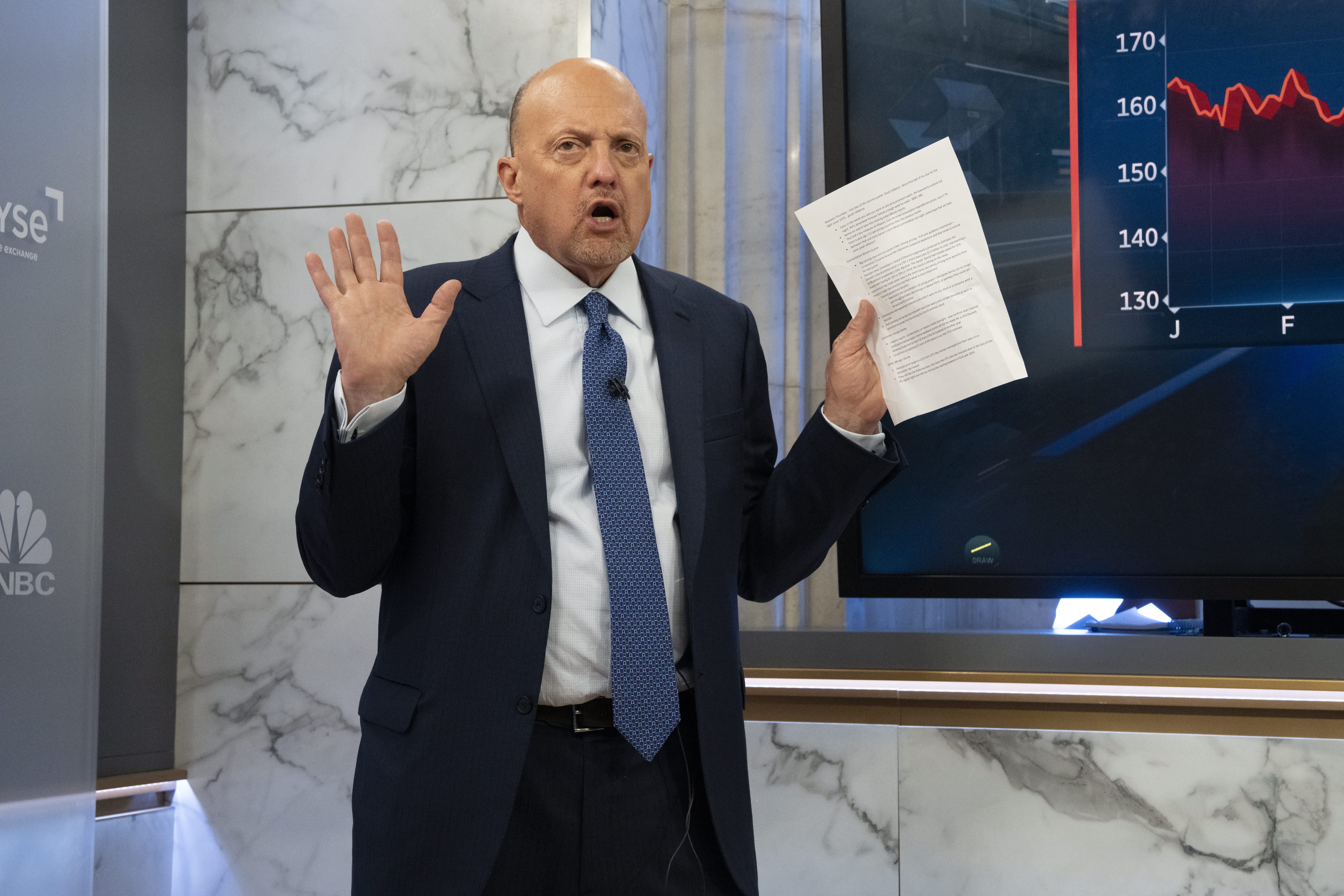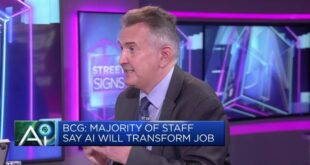Illustration by Elham Ataeiazar
Artificial intelligence is scary to a lot of people, even within the tech world. Just look at how industry insiders have co-opted a tentacled monster called a shoggoth as a semi-tongue-in-cheek symbol for their rapidly advancing work.
But their online memes and references to that creature — which originated in influential late author H.P. Lovecraft’s novella “At the Mountains of Madness” — aren’t quite perfect, according to the world’s leading Lovecraft scholar, S.T. Joshi.
related investing news

If anyone knows Lovecraft and his wretched menagerie, which includes the ever-popular Cthulhu, it’s Joshi. He’s edited reams of Lovecraft collections, contributed scores of essays about the author and written more than a dozen books about him, including the monumental two-part biography “I Am Providence.”
So, after The New York Times recently published a piece from tech columnist Kevin Roose explaining that the shoggoth had caught on as “the most important meme in A.I.,” CNBC reached out to Joshi to get his take — and find out what he thought Lovecraft would say about the squirmy homage from the tech world.
“While I’m sure Lovecraft would be grateful (and amused) by the application of his creation to AI, the parallels are not very exact,” Joshi wrote. “Or, I should say, it appears that AI creators aren’t entirely accurate in their understanding of the shoggoth.”
Read more: How to talk about AI like an insider
First of all, it’s “shoggoth,” not “Shoggoth,” Joshi said. The capitalized version of the word, as it’s spelled in the Times article, has indeed appeared in many editions of “At the Mountains of Madness,” which was first published in “Astounding Stories” in 1936, the year before Lovecraft died at age 46. But decades ago, Joshi found that Lovecraft himself made it lowercase in his manuscript and typescript of the science fiction/horror tale set in Antarctica.
“It is a species name, not a proper name,” Joshi wrote in an email to CNBC.
But that’s a minor quibble. There are bigger thematic things to consider.
Workers and others in the generative-AI field use the shoggoth meme, which often appears as a squiggly cartoon festooned with eyes and appendages, to acknowledge the mysterious, at-times frightening potential of the technology. “That some A.I. insiders refer to their creations as Lovecraftian horrors, even as a joke, is unusual by historical standards,” Roose wrote in his Times column.
The recent advancement of generative AI has already provoked references to science fiction classics such as “The Terminator” and “The Matrix,” or Harlan Ellison’s chilling science fiction story “I Have No Mouth, and I Must Scream,” all of which portray sinister artificial intelligence wiping out most of humanity.
Bringing Lovecraft’s cosmic horrors into the mix might seem excessive at this point, even as the technology creates uncanny things. For instance, a recent fake Toronto Blue Jays ad, created by a TSN producer who used text-to-video AI tech, is packed with horrifying images such as people feasting on each other’s hot dog tentacles.
The shoggoth meme’s creator, known by the Twitter handle @TetraspaceWest, said the inspiration came about because Lovecraft’s monsters are “indifferent and their priorities are totally alien to us and don’t involve humans, which is what I think will be true about possible future powerful A.I.”
Astounding Stories – February 1936 (Street & Smith) – “At the Mountains of Madness” by H. P. Lovecraft. Artist Howard V. Brown, 1936
Pierce Archive LLC | Buyenlarge | Getty Images
The meme also tries to put a happy face on the shoggoth — literally — as it usually depicts the monster sporting a smile emoji on a tentacle. That’s in reference to efforts to train language models to be nice, according to the Times. It also reads like a commentary on how futile and absurd it might be to try.
Lovecraft’s shoggoths probably wouldn’t entertain the idea of sending a friendly signal, and, in the story, they certainly aren’t indifferent to their creators, whom they try to usurp.
While artificial intelligence is based in machines, the monsters in the novella are organically bred slave creatures that develop brains and their own will, Joshi pointed out. Lovecraft describes a shoggoth as a “column of foetid black iridescence” consisting of “protoplasmic bubbles, faintly self-luminous, and with myriads of temporary eyes forming and unforming as pustules of greenish light.”
A big concern among people who fear AI is that the programs will someday become more intelligent than humans and take over. There is no parallel event in Lovecraft’s story. The shoggoths don’t end up surpassing their masters, the ancient Old Ones, “in intelligence or any other capacity,” Joshi writes. “Lovecraft clearly states otherwise.”
That’s not to say the meme totally misses the mark.
In the story, shoggoths rise up against the Old Ones in a series of slave revolts that surely contribute to the collapse of the Old Ones’ society, Joshi notes. The AI anxiety that inspired comparisons to the cartoon monster image certainly resonates with the ultimate fate of that society.
“So the general metaphor of an artificial creation overwhelming its creator does have some sort of parallel to AI (or the fears of what AI might do in the future), but it’s a fairly inexact parallel,” Joshi wrote.
But even this imperfect metaphor pairs well with what happens in Lovecraft’s story, which describes a once-grand civilization that had too many problems to fix.
In our world — a world beset by toxic wildfire smoke and water shortages, violent insurrections in democracies, and the most military combat in Europe since World War II — AI is just part of a whole. There’s a lot of hype and confusion around it, as well as positive potential. There are also real concerns, namely in how AI could act as an accelerant for bigotry and extremism, or as an engine for misinformation, or as a job killer.
In the novella, the Old Ones fall prey to a variety of threats, including attacks from rival entities who come from outer space. The story ends with insinuations of even greater mind-shattering horrors that lay beyond the mountains of madness.
In reality, humans could well scale those terrible heights with the help of AI, but only if we let it happen. Maybe we should be the ones wearing the smiley faces.
 EU News Digest Latest News & Updates
EU News Digest Latest News & Updates



